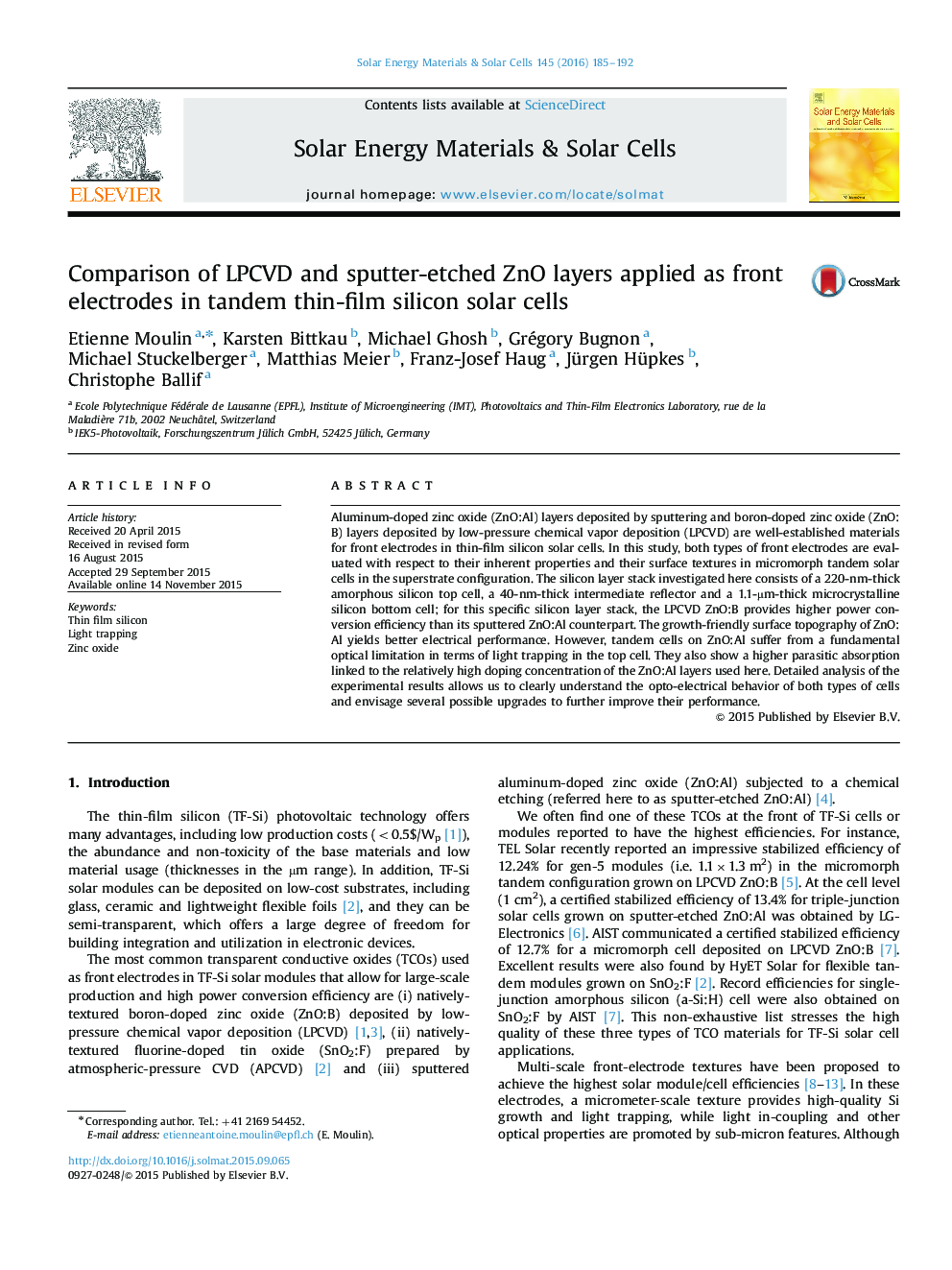| Article ID | Journal | Published Year | Pages | File Type |
|---|---|---|---|---|
| 77672 | Solar Energy Materials and Solar Cells | 2016 | 8 Pages |
•Comparison of tandem solar cells on sputter-etched ZnO:Al and LPCVD ZnO:B.•ZnO:Al affords better intrinsic electrical cell performance.•ZnO:Al provides lower light coupling to the cells and higher optical losses.•ZnO:Al results in a lower light trapping in the top cell.•Irrespective of the current matching, ZnO:B provides a higher efficiency.
Aluminum-doped zinc oxide (ZnO:Al) layers deposited by sputtering and boron-doped zinc oxide (ZnO:B) layers deposited by low-pressure chemical vapor deposition (LPCVD) are well-established materials for front electrodes in thin-film silicon solar cells. In this study, both types of front electrodes are evaluated with respect to their inherent properties and their surface textures in micromorph tandem solar cells in the superstrate configuration. The silicon layer stack investigated here consists of a 220-nm-thick amorphous silicon top cell, a 40-nm-thick intermediate reflector and a 1.1-µm-thick microcrystalline silicon bottom cell; for this specific silicon layer stack, the LPCVD ZnO:B provides higher power conversion efficiency than its sputtered ZnO:Al counterpart. The growth-friendly surface topography of ZnO:Al yields better electrical performance. However, tandem cells on ZnO:Al suffer from a fundamental optical limitation in terms of light trapping in the top cell. They also show a higher parasitic absorption linked to the relatively high doping concentration of the ZnO:Al layers used here. Detailed analysis of the experimental results allows us to clearly understand the opto-electrical behavior of both types of cells and envisage several possible upgrades to further improve their performance.
